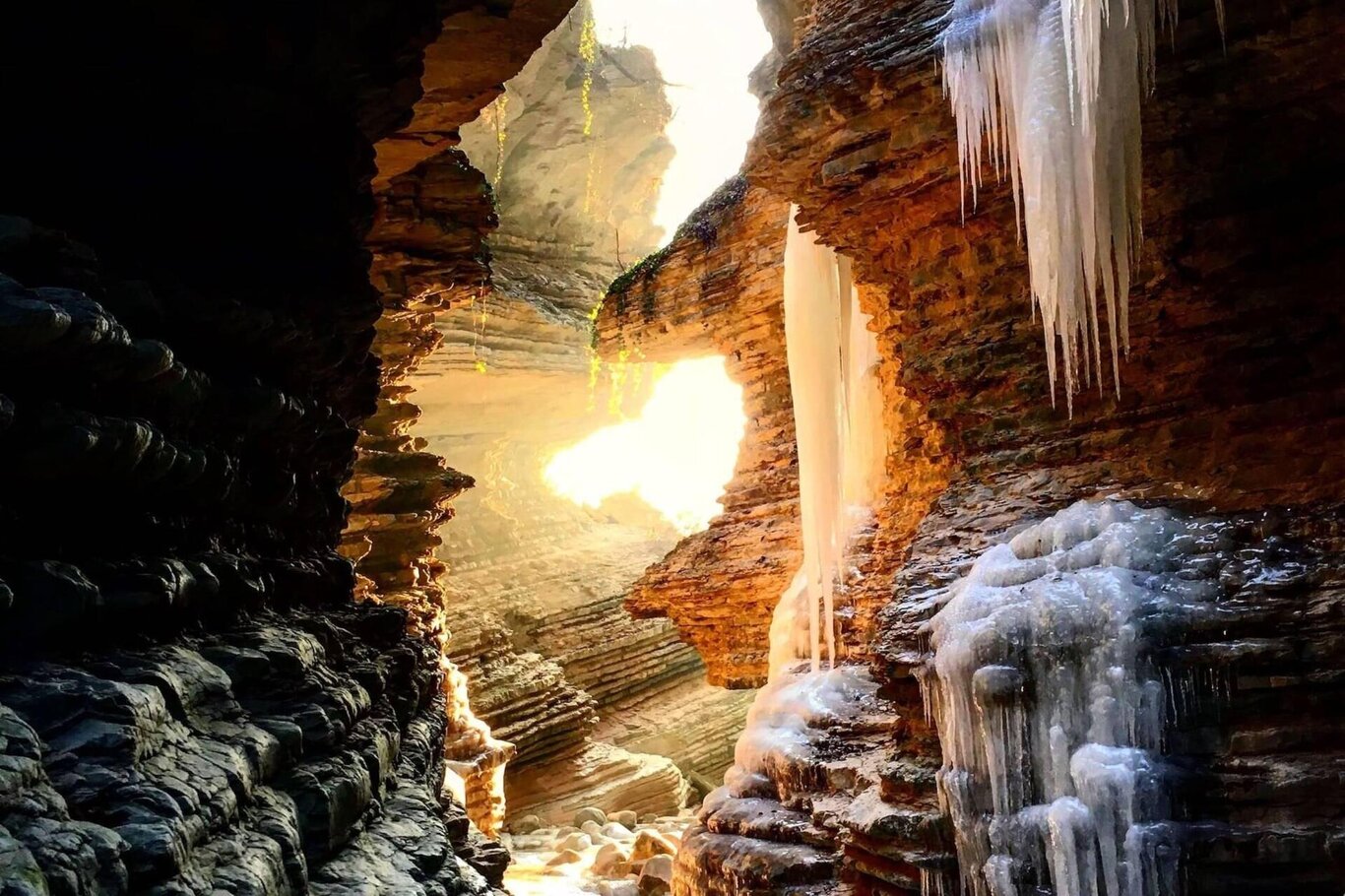Among the many offerings that the Veneto region provides for hiking enthusiasts, there is one capable of reserving much surprise with landscapes that seem projected from distant worlds: it is the Brent de l'Art, the characteristic canyons carved into the rock by the Ardo stream, in the Valbelluna.
They are located in Sant'Antonio Tortal, a fraction of Borgo Valbelluna, and are accessible with a pleasant walk starting from the village, along a protected path that only becomes steep in the last sections. The name "Brent" comes from the dialectal expression 'brentana' and indicates a situation of flooding of a stream or river after heavy rain, while 'Art' is the diminutive of the stream's name, Ardo.
The formation of these suggestive canyons dates back to the end of the Wurm glaciation (about 8-10 thousand years before Christ), due to erosion caused by rainwater rich in dust and abrasive grains. Although they are small gorges, due to their particular shape and the composition of the marbled limestone layers - as well as the characteristic colors ranging from red, white, and greenish gray - the Brent are the most fascinating in the area, considered among the ecological monuments of the Belluno Prealps.
Itinerary:
Leave the car at the cemetery in Sant'Antonio Tortal and cross the beautiful manicured meadows of Col de Varda, a site inhabited since the Mesolithic and became a watch post in the Middle Ages. Walk along the panoramic ridge north of the Ardo stream and be enchanted by the suggestive ancient rocks millions of years old at the entrance of Brent Grande that the erosion of the stream has brought to light.
After taking the customary photos, venture into the woods, where you will encounter the “calchere,” ancient kilns for lime production. As you walk a stretch of the ancient medieval road that led to Passo S. Boldo, you will find the remains of the old watermill of the “Biattole.” The return to the village occurs by passing over some hairpin bends of the ancient road “Trichiana-Tovena Straße,” built in just 100 days by the Austro-Hungarian engineering corps in 1918 in anticipation of the “Battle of the Solstice” on the Piave during World War I.
USEFUL INFORMATION:
Path Length: 5200m
Average Travel Time: 2 hours 30'
Difficulty: medium
It is forbidden:
- to follow the route in anticipation of adverse weather conditions in the catchment area of the stream;
- to visit the site even in the first hours following a storm event that has affected the catchment area of the stream to avoid encounters with large amounts of water; to step outside the marked paths where present;
- to lean over and climb over the barriers and fences where present;
It is strongly advised:
- to equip oneself with appropriate personal equipment that is specific and complete, such as Personal Protective Equipment, in order to ensure one's own and others' safety; this equipment should consist at least of hiking shoes and mountain clothing;
- to walk in a single file along the trails;
- to refrain from adopting noisy or disruptive behaviors and to respect the environment.
